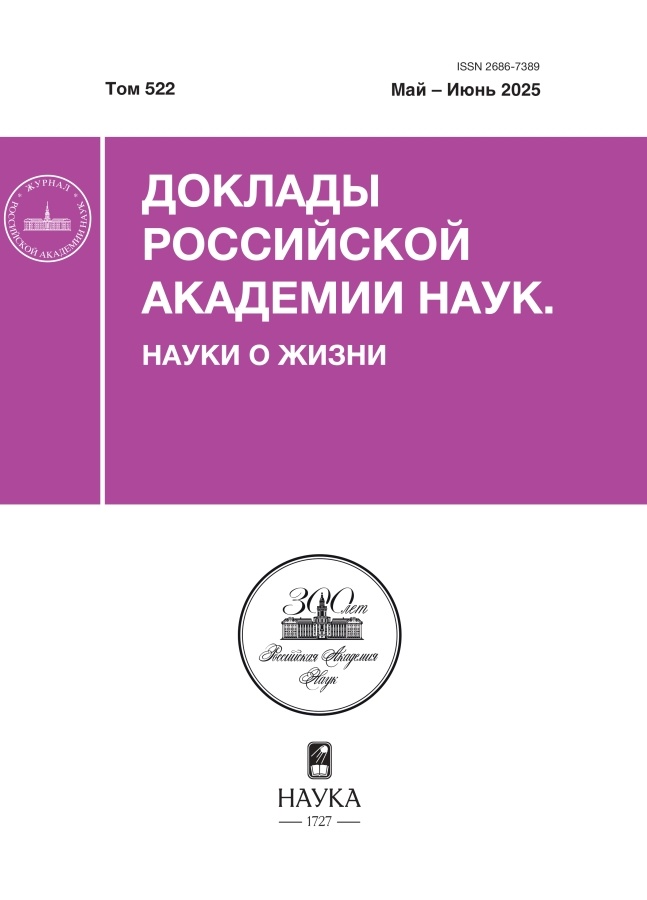In vitro and in vivo biodegradation of silk fabric scaffolds
- Authors: Agapov I.I.1, Podbolotova E.I.1,2, Nemets E.A.1, Kirsanova L.A.1, Grudinin N.V.1, Pashutin A.R.1,2, Agapova O.I.1, Efimov A.E.1, Basok Y.B.1, Lyundup A.V.3, Gautier S.V.1,4
-
Affiliations:
- Academician V.I. Shumakov Federal Research Center of Transplantology and Artificial Organs, Ministry of Health of the Russian Federation
- Moscow Institute of Physics and Technology
- Рeoples’ Friendship University of Russia
- Sechenov University
- Issue: Vol 520, No 1 (2025)
- Pages: 45-49
- Section: Articles
- URL: https://ter-arkhiv.ru/2686-7389/article/view/682031
- DOI: https://doi.org/10.31857/S2686738925010089
- EDN: https://elibrary.ru/tcqqzj
- ID: 682031
Cite item
Abstract
This study investigates the biodegradation of natural silk scaffolds made from gauze and satin fabrics under in vitro and in vivo conditions. Experiments were conducted using phosphate-buffered saline and Fenton’s reagent to model degradation. The samples demonstrated high stability under physiological conditions’ model and exhibited varying degradation rates under oxidative stress. In vivo studies on rats revealed good biocompatibility of the scaffolds and a gradual reduction in inflammatory responses. These findings highlight the potential of silk scaffolds for use in various areas of regenerative medicine.
Full Text
About the authors
I. I. Agapov
Academician V.I. Shumakov Federal Research Center of Transplantology and Artificial Organs, Ministry of Health of the Russian Federation
Author for correspondence.
Email: igor.agapov@gmail.com
Russian Federation, Moscow
E. I. Podbolotova
Academician V.I. Shumakov Federal Research Center of Transplantology and Artificial Organs, Ministry of Health of the Russian Federation; Moscow Institute of Physics and Technology
Email: igor.agapov@gmail.com
Russian Federation, Moscow; Dolgoprudny
E. A. Nemets
Academician V.I. Shumakov Federal Research Center of Transplantology and Artificial Organs, Ministry of Health of the Russian Federation
Email: igor.agapov@gmail.com
Russian Federation, Moscow
L. A. Kirsanova
Academician V.I. Shumakov Federal Research Center of Transplantology and Artificial Organs, Ministry of Health of the Russian Federation
Email: igor.agapov@gmail.com
Russian Federation, Moscow
N. V. Grudinin
Academician V.I. Shumakov Federal Research Center of Transplantology and Artificial Organs, Ministry of Health of the Russian Federation
Email: igor.agapov@gmail.com
Russian Federation, Moscow
A. R. Pashutin
Academician V.I. Shumakov Federal Research Center of Transplantology and Artificial Organs, Ministry of Health of the Russian Federation; Moscow Institute of Physics and Technology
Email: igor.agapov@gmail.com
Russian Federation, Moscow; Dolgoprudny
O. I. Agapova
Academician V.I. Shumakov Federal Research Center of Transplantology and Artificial Organs, Ministry of Health of the Russian Federation
Email: igor.agapov@gmail.com
Russian Federation, Moscow
A. E. Efimov
Academician V.I. Shumakov Federal Research Center of Transplantology and Artificial Organs, Ministry of Health of the Russian Federation
Email: igor.agapov@gmail.com
Russian Federation, Moscow
Yu. B. Basok
Academician V.I. Shumakov Federal Research Center of Transplantology and Artificial Organs, Ministry of Health of the Russian Federation
Email: igor.agapov@gmail.com
Russian Federation, Moscow
A. V. Lyundup
Рeoples’ Friendship University of Russia
Email: igor.agapov@gmail.com
Russian Federation, Moscow
S. V. Gautier
Academician V.I. Shumakov Federal Research Center of Transplantology and Artificial Organs, Ministry of Health of the Russian Federation; Sechenov University
Email: igor.agapov@gmail.com
Academician of the RAS
Russian Federation, Moscow; MoscowReferences
- Котлярова М.С., Архипова А.Ю., Мойсенович А.М., и др. Биорезорбируемые скаффолды на основе фиброина для регенерации костной ткани // Вестник Московского университета. Серия 16. Биология. 2017. № 4. С. 228–228.
- Котлярова М.С., Солдатенко А.С., Архипова А.Ю., и др. Фотоотверждаемые пленки на основе фиброина и желатина для регенерации кожных покровов // Вестник Московского университета. Серия 16. Биология. 2020. С. 23–30.
- Bai S., Zhang W., Lu Q., et al. Silk nanofiber hydrogels with tunable modulus to regulate nerve stem cell fate // J. Mater. Chem. B. 2014. Vol. 2, No. 38. P. 6590–6600.
- Dinis T.M., Elia R., Vidal G., et al. 3D multi-channel bi-functionalized silk electrospun conduits for peripheral nerve regeneration // J. Mech. Behav. Biomed. Mater. 2015. Vol. 41. P. 43–55. doi: 10.1016/j.jmbbm.2014.09.029. Epub 2014 Oct 13.
- Settembrini A., Buongiovanni G., Settembrini P., et al. In-vivo evaluation of silk fibroin small-diameter vascular grafts: State of art of preclinical studies and animal models // Frontiers in Surgery. 2023. Vol. 10.
- Vepari C., Kaplan D.L. Silk as a biomaterial // Prog. Polym. Sci. 2007. Vol. 32, No. 8-9. P. 991–1007. doi: 10.1016/j.progpolymsci.2007.05.013.
- Cao Y., Wang B. Biodegradation of silk biomaterials // Int. J. Mol. Sci. 2009. Vol. 10. P. 1514–1524.
- Сафонова Л.А., Боброва М.М., Ефимов А.Е., и др. Биодеградируемые материалы на основе тканей из натурального шелка как перспективные скаффолды для тканевой инженерии и регенеративной медицины // Вестник трансплантологии и искусственных органов. 2020. Т. 22, № 4. С. 105–114.
- Агапов И.И., Агапова О.И., Ефимов А.Е., и др. Способ получения биодеградируемых скаффолдов на основе тканей из натурального шелка // Патент на изобретение RU 2653428 С1. 08.05.2018.
- Muranov K.O. Fenton reaction in vivo and in vitro. Possibilities and limitations // Biochemistry (Mosc). 2024. Vol. 89, Suppl 1. P. S112–S126. doi: 10.1134/S0006297924140074.
Supplementary files













